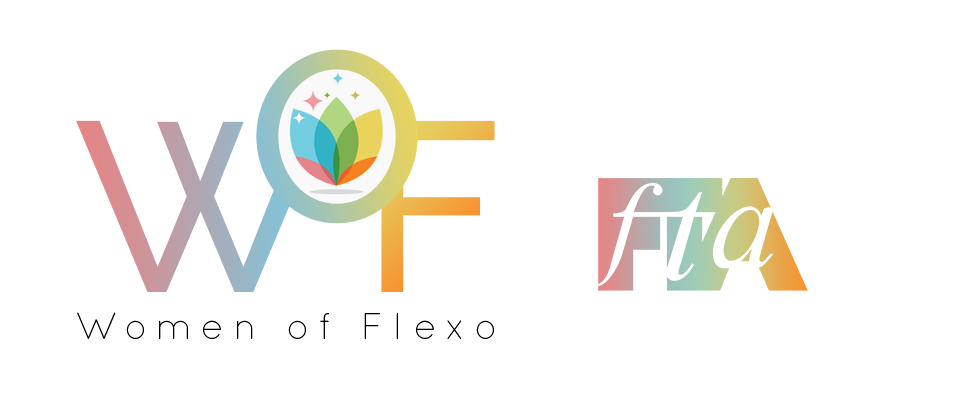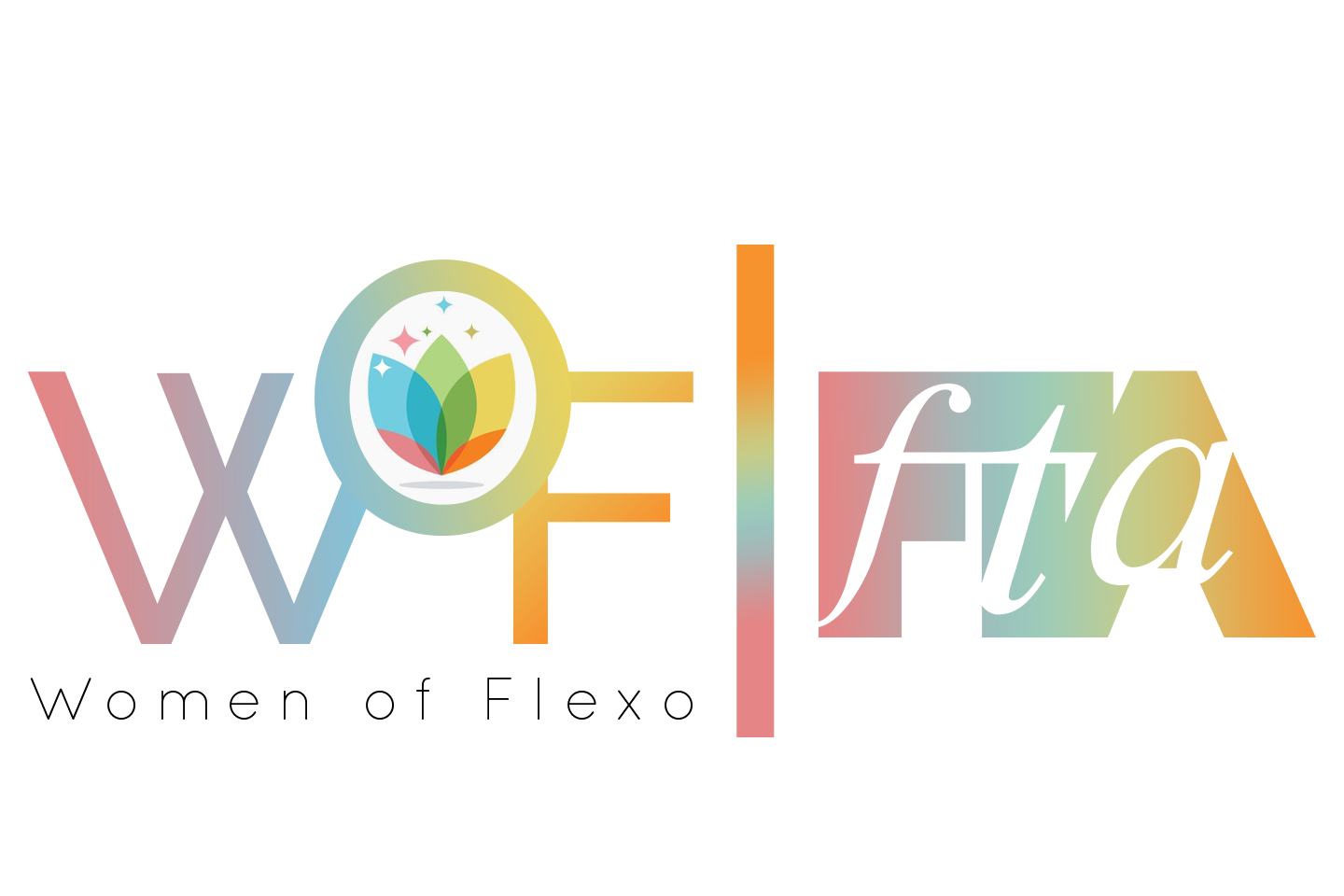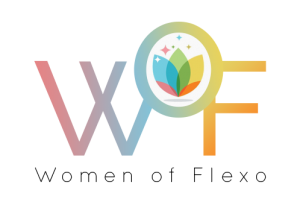ProjectFLEX: Complete
We proudly showcased our finished ProjectFLEX at InfoFlex in March 2023. Now we’re breaking down each step of the process and giving a little behind the scenes to one of our favorite projects.
 Introducing ProjectFLEX
Introducing ProjectFLEX
This marks the inaugural year of ProjectFLEX, an annual print project showcasing the capabilities of the amazing women in the flexographic industry. We partnered with Amor Artis brewing and many women throughout the flexo industry to design, create, and print labels for their yearly brew, Boss Lady. You can read all about our collaboration on our previous blog: Cheer’s to Galentine’s.
Phase one was planning and design, where we brainstormed ideas, outlined the project, and found our sponsors.
“I was excited to share the depth and layered experiences and expertise that exists within our group.” Said Katie Graham, a ProjectFLEX sponsor from BOBST and active member of Women of Flexo, “This project was not simply promoting WOF, it was sharing how technically capable we are.”
We break down the details of phase one in our blog ProjectFLEX – Planning and Design.
Phase 2 – Prepress and Plates
 Once the designs for the project were finalized, it was time to move onto the execution phase, starting with prepress and platemaking. Read on for our interview with Kiersten Borden from XSYS Global and Paige Solkonik from Anderson & Vreeland.
Once the designs for the project were finalized, it was time to move onto the execution phase, starting with prepress and platemaking. Read on for our interview with Kiersten Borden from XSYS Global and Paige Solkonik from Anderson & Vreeland.
What made you want to participate in the project?
Kiersten: When Courtney brought the idea of ProjectFlex to the WoF steering committee, it caught my attention right away. I loved the concept because it brings together two women’s organizations to create a label for a product made to celebrate International Women’s day. Plus, there was an underlying printing theme with the brewery (The Print Shop), so everything was related to highlighting women, printing and brewing. I felt this was a perfect project to bring Women of Flexo members together to show what we can accomplish as an organization.
Paige: The combination of WoF having a bigger presence at an event like FTA + beer = I am always in and happy to support that!
What were you able to contribute to the project?
Kiersten: I was able to contribute as a material sponsor through my company, XSYS. We have full plate making capabilities in our Charlotte facility, so we could process and deliver finished plates for the project.
 What did your process look like?
What did your process look like?
Paige: Kiersten and I work hand-in-hand with the plate material that was used for this project. We both helped identify the best kind of material to use and helped support the tech team at XSYS on this decision.
Kiersten: We decided to go with the nyloflex® XVH thermal plate. This is a versatile and quality plate that is popular amongst our tag and label customers.
Our group then had a couple meetings to schedule and determine the best way to test run the plates, pull the necessary data and set up files in our given timeline. I then was able to deliver a test plate to Clemson’s team to run and pull curve data for CSW to complete the prepress portion.
Once files were completed, we were able to make plates from our Charlotte technical center and ship them to Clemson for the press run.
On the run date, Kenny set up a virtual meeting for us suppliers to watch the press run and assist with any potential obstacles that might come up day of. There were a couple press variables to work out at the start of the run but the Clemson team was on it.
Did you run into any challenges? How did you overcome them?
 Kiersten: I think the biggest challenge was working with a tight production timeline – but when is that not the case! I felt that all of us sponsors did a great job working together and staying in constant communication to answer questions and deliver materials to get the job done in time.
Kiersten: I think the biggest challenge was working with a tight production timeline – but when is that not the case! I felt that all of us sponsors did a great job working together and staying in constant communication to answer questions and deliver materials to get the job done in time.
Paige: I think our only issue was getting a new Process black plate sent out there toward the end of the process. Kiersten was able to handle that with the help of her team—she did a great job getting a new plate overnighted to Clemson!
Kiersten: Yeah, during the press run, the decision was made to pull the black label design to make file adjustments. Clemson was able to communicate with CSW right away, CSW was then able to make that file change by the next day and our team made the new plate as soon as we received the file. Then we shipped for next day delivery so Clemson was able to get back to press finish and the run in time to deliver to the converter. What a perfect transition from different companies all working together!
 Any final thoughts on the project?
Any final thoughts on the project?
Kiersten: I’m so happy with how the final product came out and I’m proud of the teamwork and effort that everyone put into making this project happen.
Paige: This was an amazing idea that the group came up with and I can only hope this helps pave the way for future WoF projects to come. When women come together to support one another incredible things happen! What’s next?!
Phase 3 – Printing and Logistics
After the files were prepped and the plates were made, it was finally time to get our labels on press! Kenny Tucker at Clemson University was a key player in the planning process and he connected us with Michelle Fox, Bella Vallarde and Megan Brown—the dream team that brought the labels to life.
Keep reading for our interview with Kenny.
What made you want to participate in the project?
For me, I greatly enjoy being able to help others. When I heard about the scope of the project I knew that I could help and I knew I could find some people to help get the work done.
What were you able to contribute to the project?
I helped plan logistics for printing and converting and made sure to be a voice at Clemson for rallying Mrs. Fox, Bella, and Megan.
What did your process look like?
Mainly a lot of conversations about what was needed to get the ink on the film. Solidifying plates, artwork sizes and layouts, die shapes, material needs, managing deadlines, and making sure that we created a professional look on a student budget. On top of that, I just made sure Michelle had what she needed and assisted however I could.
*Editor’s note – Kenny also went above and beyond by driving the finished labels to the brewery in Fort Mill, SC so that we could stick to their canning line schedule. Thank you, Kenny!
Did you run into any challenges? How did you overcome them?
Most of our challenges just came down to time management. We were able to have some flexibility because Michelle and I scheduled in some buffer. This allowed us to be flexible to things that were out of our control, like student projects.
Any final thoughts on the project?
It was a blast and I hope we get to be part of it again! I think that we can do a an even better job next year, possibly incorporating an OPV? And we should have some new options for converting too.
We want to give a huge thanks to all of our sponsors! This project never could have happened without you.




